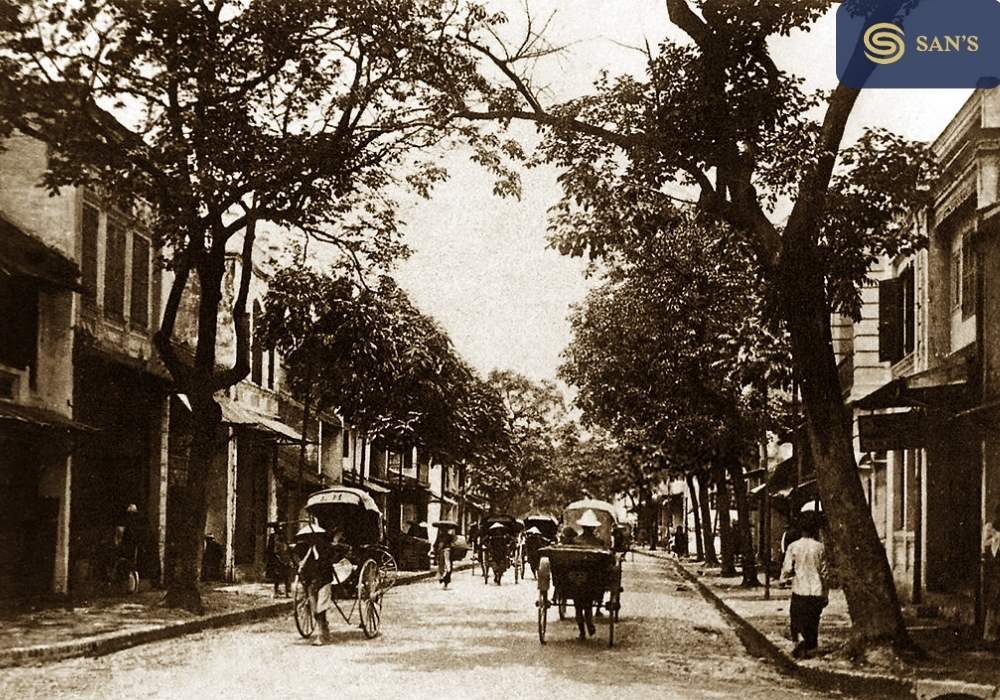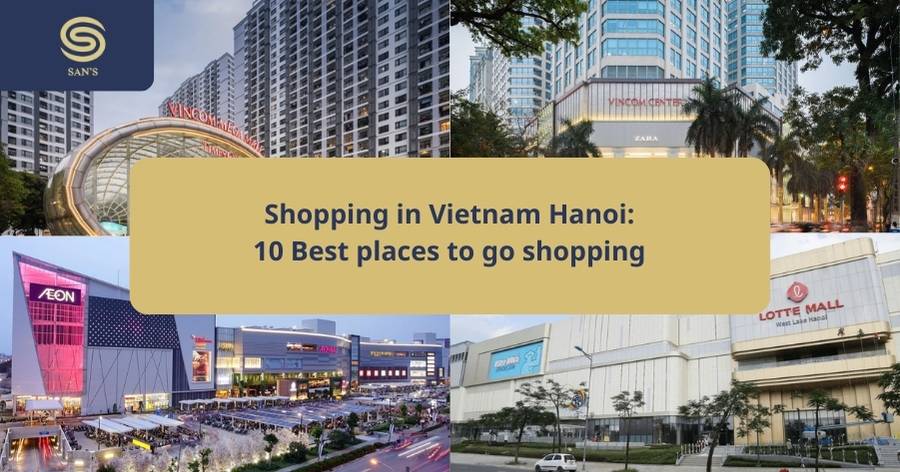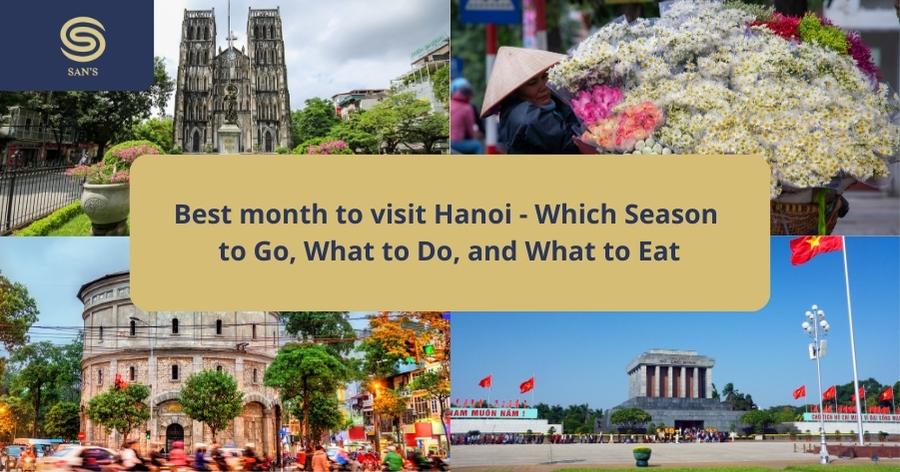Hang Dieu Street – a microcosm of Hanoi’s broader narrative. Not just a pathway, but a vibrant artery coursing with life, it mirrors Hanoi’s juxtaposition of the old and the new. Here, ancient craft shops lie nestled between contemporary bistros, and the scent of traditional pho mingles with the aroma of freshly brewed espresso.
As we embark on this journey down Hang Dieu Street, we invite you to witness Hanoi’s heartbeat, where every step is an ode to its storied past and a toast to its promising future.
The Historical Significance of Hang Dieu Street
Long before the neon signs and aromatic coffee shops came into being, Hang Dieu Street was already weaving its mark into Hanoi’s intricate history. Like the veins of a leaf, the origins of Hang Dieu branch out, deeply embedded in the foundations of the city itself.
Tracing back to its earliest mentions, Hang Dieu Street, whose name translates to ‘Street of Pipes’, was once the heart of Hanoi’s tobacco trade. Artisans would diligently craft traditional clay pipes, which not only served a utilitarian function but also symbolized the city’s rich craftsmanship. As Hanoi evolved, so did Hang Dieu. With every change in rulership and each dynasty’s rise and fall, this humble street adapted, transforming and molding itself to the needs and tastes of the times.
-

hang dieu street in the past
The colonial periods, particularly the French occupation, brought significant changes to Hang Dieu’s landscape. The architecture morphed, blending Vietnamese designs with European influences, creating a streetscape that juxtaposed colonial grandeur with local resilience. Businesses flourished, yet, beneath the surface, the street became a silent witness to the political undercurrents and the aspirations of a nation yearning for self-identity.
Through the ages, Hang Dieu Street has not just been a passive spectator but an active participant in Hanoi’s socio-cultural evolution. From a bustling hub of trade in ancient times to its present-day avatar as a melting pot of traditions and modernity, Hang Dieu stands as a testament to Hanoi’s indomitable spirit and its ever-evolving narrative.
Modern Hang Dieu: Cafes, Eateries, and Contemporary Outlets
As dawn breaks over Hanoi, Hang Dieu Street awakens not to the chimes of craftsmen at work as in days of old, but to the rhythmic beats of espresso machines and the soft hum of conversations in countless cafes. The street, ever adaptive, has donned a new face, becoming a gastronomic and commercial haven in the heart of the city.
The cafes along Hang Dieu are as diverse as the people they serve. Places like Café Nang, with its warm wooden interiors, beckon visitors with the promise of traditional Vietnamese coffee, its aroma wafting through the air, mingling with the intoxicating scents from nearby eateries. Venture a little further, and you might stumble upon Bistro Boulevard, a modern establishment offering a fusion of Vietnamese and Western dishes, a culinary testament to Hanoi’s global influences.
-

Hanoi Old Quarter
But it isn’t just about food and coffee. Hang Dieu has become a hotspot for the young and trendy, with boutique shops showcasing everything from locally designed fashion to innovative tech gadgets. Concept stores such as Urban Hanoi have popped up, offering a curated selection of contemporary Vietnamese designs, while spaces like The Hang Dieu Hub provide a platform for local artists and entrepreneurs to showcase their talents and wares.
These modern establishments stand shoulder to shoulder with traditional businesses, creating a harmonious blend of the old and the new. For every artisanal leather shop or high-end boutique, there’s a family-run pho stall that’s been serving mouth-watering bowls for generations.
Today’s Hang Dieu Street is a manifestation of Hanoi’s global aspirations while remaining rooted in local culture. It’s a place where the city’s youth converge with tourists, all seeking a taste of Hanoi’s present, even as its storied past lingers in the shadows. It’s a testament to the city’s ability to evolve, to embrace change, while still holding tightly to its rich heritage.
Travel Tips and Recommendations for Tourists
But, like any seasoned traveler knows, the true essence of a place is often captured not just by witnessing its sights but by understanding and respecting its customs. Here are some travel tips and recommendations for tourists to ensure a fulfilling and respectful visit:
Local Etiquettes and Customs:
- Greetings: A slight bow or nod is a traditional form of greeting, especially with elders. It’s a sign of respect and is always appreciated.
- Dress Appropriately: When visiting religious sites or traditional areas, it’s essential to dress modestly. For women, this often means covering the shoulders and wearing pants or skirts that go below the knee. Men should avoid wearing sleeveless shirts in such places.
- Remove Your Shoes: If visiting someone’s home or certain shops, it’s customary to remove your shoes. You might also find this custom in some traditional cafes or eateries.
- Public Displays of Affection: While Hanoi is a modern city, it’s still rooted in traditional values. It’s advisable to avoid excessive public displays of affection, especially in sacred or very traditional areas.
-

Hanoi Old Quarter
Shopping Tips:
- Bargaining: While shopping in local markets or street stalls, bargaining is not just accepted; it’s expected. Start by quoting a price lower than what you’re willing to pay, but always keep the negotiation friendly. Remember, the final amount should be agreeable to both parties.
- Ensuring Authenticity: Hang Dieu Street and its surrounding areas offer a plethora of unique items. If you’re purchasing something that’s being sold as an antique or a traditional craft, ask about its origins, the materials used, and the crafting process. Reputable sellers will be happy to share the backstory.
- Unique Souvenirs: Instead of opting for the usual trinkets, consider buying items that truly represent Hanoi’s culture. Handcrafted items like silk scarves, lacquerware, or traditional musical instruments make for meaningful souvenirs. Hang Dieu Street also offers a range of contemporary items, from artisanal coffee blends to locally designed jewelry, which can be a modern memento of your trip.
FAQs about Hang Dieu Street, Hanoi
-

Dong Xuan Market
1. Where exactly is Hang Dieu Street located in Hanoi? Hang Dieu Street is centrally located in the Old Quarter of Hanoi, easily accessible and within walking distance of many of the city’s popular landmarks.
2. What is the best time to visit Hang Dieu Street? The best time to visit Hang Dieu Street is during the early morning or late afternoon to avoid the midday heat. Weekdays are less crowded compared to weekends.
3. Is Hang Dieu Street safe for tourists? Yes, Hang Dieu Street is generally safe for tourists. However, like any bustling area, it’s advisable to be cautious of your belongings and be aware of your surroundings.
4. Can I find vegetarian or vegan food options on Hang Dieu Street? Absolutely! Hanoi’s food scene is diverse, and many eateries on Hang Dieu Street offer vegetarian and vegan options.
5. Are there any accommodations available on or near Hang Dieu Street? Yes, the area surrounding Hang Dieu Street boasts a range of accommodations, from boutique hotels to budget-friendly hostels.
6. How do I know if a product is authentic when shopping on Hang Dieu Street? It’s best to shop from reputable sellers and ask questions about the product’s origins. Many artisans and shop owners are proud of their craft and will happily provide information.
7. Are there English-speaking guides available for a tour of Hang Dieu Street? Yes, there are many tour operators in Hanoi offering guided tours of the Old Quarter, including Hang Dieu Street, with English-speaking guides.
8. What’s the average price range for meals on Hang Dieu Street? Hang Dieu Street offers a variety of eateries catering to different budgets. You can enjoy a delicious street food dish for just a couple of dollars, while a meal at a more upscale restaurant might cost more.
9. Are credit cards accepted in the shops on Hang Dieu Street? While many modern establishments and restaurants do accept credit cards, some smaller shops and street vendors might only accept cash. It’s advisable to carry some local currency with you.
10. How is Hang Dieu Street different from other streets in Hanoi’s Old Quarter? Hang Dieu Street is a blend of Hanoi’s rich history and modern influences, making it a unique blend of the old and new. Its rich tapestry of cafes, traditional shops, and contemporary outlets sets it apart from other streets in the area.
>>> 36 streets Hanoi





